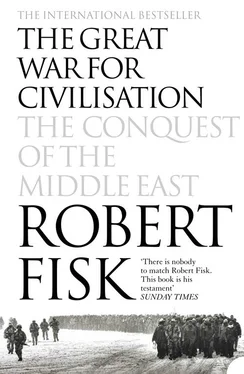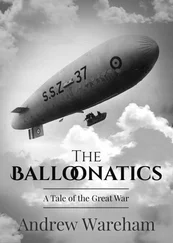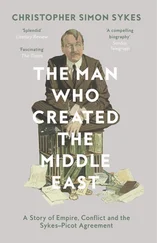I sat behind the Dubai control tower thinking about this. Yes, the passengers would all fall out of the sky like that, over a wide area, together, in clumps, in bits, from 10,000 feet it seemed. I could imagine the impact with the sea, the spouts of water, some of the passengers – no doubt – still fully conscious all the way down. Three days later, in the emergency Bandar Abbas mortuary, I would look at Fatima Faidazaida and realise with horror that she must have been alive as she fell from the heavens, clutching her baby as she tumbled and spilled out of the sky in the bright summer sun, her fellow passengers and chunks of the Airbus and burning fuel oil cascading around her. And she held on to her baby, knowing – could she have known? – that she must die.
From Dubai that Sunday night, I sent three reports to The Times , the longest dispatch a detailed account of the record of the US navy’s constant misidentification of civil aircraft over the Gulf and the near-panic that the air-traffic controllers had heard over the airwaves from the American warships. The Vincennes had claimed it was under attack by Iranian Revolutionary Guards in motor boats at the time it destroyed the airliner. I knew that US warships carried the timetables of civil airliners in their ‘combat information centres’ (CICs). Had Captain Rogers and his crew not had time to look at their copy? Iran Air flight IR655 flew to Dubai every day from Bandar Abbas. Why should it become a target on 3 July?
Captain Rogers himself said that he would have to live for ever with the burden of his own conscience at what he had done. Four years later, he would publish his own account of the destruction of the Airbus. *This would include a vivid description of an attack on the Vincennes by Iranian motor boats, the first alert of an aircraft taking off from Bandar Abbas – a military as well as civil airport – and the information that the aircraft was issuing two transponder codes, one used by passenger aircraft, the other a military code ‘known to have been used by Iranian F-14 fighters’. The plane was also being monitored by the frigate USS Sides , naval coding FFG-14 – this was the ship whose crew, according to the Dubai traffic controllers, would see bodies falling out of the sky.
Before the Airbus was 40 kilometres from his warship Rogers had sent a routinely worded warning – but addressed it to a fighter aircraft: ‘Iranian aircraft … fighter on course two-one-one, speed 360 knots, altitude 9,000 feet, this is USNWS [United States Navy warship] bearing two-zero-two from you, request you change course immediately to two-seven-zero, if you maintain current course you are standing into danger and subject to USN defensive measures …’ Rogers says he asked for further identification of the aircraft when it was 25 kilometres from his vessel. At 9.54 and 22 seconds in the morning, he launched his two missiles. Twenty-one seconds later, they exploded against Rezaian’s passenger jet, which vanished from the Vincennes’s radar screen. ‘The bridge reported seeing the flash of missile detonation through the haze,’ Rogers wrote. ‘There was a spontaneous cheer, a release of tension from the men.’ But crewmen on another US warship would moments later see a large wing of a commercial airliner, with an engine pod still attached, crashing into the sea.
Later investigation would reveal that staff of the CIC on the Sides correctly identified the Airbus’s commercial transponder code at virtually the same moment that Rogers fired. For Captain David Carlson, commanding the Sides , the destruction of the airliner ‘marked the horrifying climaxto Captain Rogers’ aggressiveness, first seen just four weeks earlier’. On 2 June, two of Rogers’s colleagues had been disturbed by the way he sailed the Vincennes too close to an Iranian frigate that was carrying out a lawful though unprecedented search of a bulk carrier for war materiel bound for Iraq. On the day the Vincennes shot down the Airbus, Rogers had launched a helicopter that flew within 2 to 3 miles of an Iranian small craft – the rules stated that the chopper had to be no closer than 4 miles – and reportedly came under fire. Rogers began shooting at some small Iranian military boats; an act that disturbed Captain David Carlson on the Sides . ‘Why do you want an Aegis cruiserout there shooting up boats?’ he later asked in an interview with an ex-naval officer. ‘It wasn’t a smart thing to do. He was storming off with no plan …’ Rogers subsequently opened fire on Iranian boats inside their territorial waters. The Vincennes had already been nicknamed ‘Robocruiser’ by the crew of the Sides .
When Carlson first heard Rogers announcing to higher headquarters his intention to shoot down the aircraft approaching his cruiser, he says he was thunderstruck. ‘I said to the folks around me, “Why, what the hell is he doing?” I went through the drill again. F-14. He’s climbing. By now this damn thing is at about 7,000 feet …’ But Carlson thought that the Vincennes might have more information – and did not know that Rogers had been told, wrongly, that the aircraft was diving. Carlson regretted that he did not interrupt Rogers. When his own men realised the Airbus was commercial, ‘they were horrified’. The official US investigation report would later say that computer data and ‘reliable intelligence’ agreed that Captain Rezaian’s airliner ‘was on a normal commercialair traffic plan profile … on a continuous ascent in altitude from take-off at Bandar Abbas’. Newsweek magazine would carry outits own investigation, branding the official report ‘a pastiche of omissions, half-truths and outright deceptions’ and painting a dramatic picture of ‘an overeager captain, panicked crewmen and a cover-up …’ In Newsweek’s report, books had been sliding off the shelves in the Vincennes ’s information centre as it manoeuvred prior to the missile launching; little chance, then, that anyone had an opportunity to look up a scheduled airline timetable.
But in the immediate aftermath of the slaughter, the Americans stuck to the tale of total innocence. Vice President Bush appeared before the UN Security Council to say that the Vincennes had been rushing to the aid of a merchant ship under Iranian attack – which was totally untrue. British prime minister Margaret Thatcher described the destruction of the Iranian Airbus as ‘understandable’. The Iranian consul in Dubai had a point when he asked me later whether Mrs Thatcher would have considered it ‘understandable’ if an Iranian warship had shot down a British Airways airliner over the Gulf and then claimed that it was an accident because its captain thought it was under attack by a US jet. One key to the disaster lay in the American claims that a warning was sent to Captain Rezaian on both military and civilian wavelengths. Did Captain Rezaian hear these warnings? If not, why not?
The evidence of the aircraft’s destruction was laid out for journalists on a parade ground at Iranian naval headquarters in Bandar Abbas. Pieces of engine cowling, wings and flaps had been scored and burned by metal fragments; a jagged hunk of wing flap had a 12-centimetre hole punched through its centre. A section of the passenger cabin wall 3 metres square had been perforated by metal shards. Several of the bodies I saw had scarlet and red burns on their flesh; these passengers must have been sitting in the centre of the aircraft, close to the two engines onto which the Vincennes’s heat-seeking missiles would have locked. Lying beside this wreckage was the nosecone of the Airbus, escape chutes, electrical circuitry and oxygen systems. The explosions had been catastrophic.
Читать дальше












